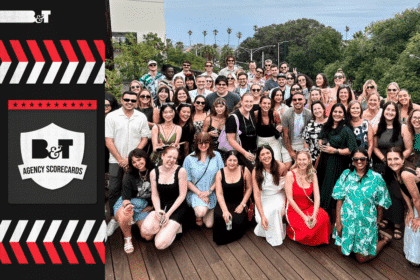At last week’s Consumer Electronic Show (CES) that took place in Las Vegas, the connected TV and how it works seamlessly with tablet and smartphone device alike was to me at least, the biggest take out from the show.
All of the major manufacturers showcased their bigger, smarter, thinner, better devices formerly known as television sets.
As part of their vision for a connected ecosystem, Samsung unveiled how there is a genuine blurring of these lines…Smart(er) TVs are coming thick and fast, with enhanced voice and gesture responsiveness allowing you to web search, change channel by mere voice command, and through the use of in-built audio recognition bring up the website of the product/brand that is advertising on TV that very second on your tablet or smartphone. The Shazam of TV if you will.
The very real potential explosion of T-Commerce (undoubtedly a big early contender for top marketing bull**it bingo phrase, 2013), e-commerce through your connected TV set, really does allow enhanced ancillary benefits of TV advertising – as we have already seen with search traffic spikes during TV campaigns.
That TV has rapidly become a truly social experience is no real surprise. It is simply a natural extension of the type of yelling at the TV screen we have been doing for decades and the earlier days of gathering around the only television in the street to watch the moon landings. The only difference is that we now have multiple TV sets in a single household and the technology to yell to a much wider audience (than mom and dad) and in doing so we can invite the whole world to watch and discuss seminal (as well as puerile, if you’re not into reality TV) events with us.
It is a given that this wholesale change in consumer behaviour is diluting attention (but critically not necessarily value) away from the traditional TV spot. The solo benefit of a 30 second spot as self-contained narrative is already long gone and increasingly serves as a teaser for a much deeper and personal brand experience.
There is nothing linear about consumer second screen usage. Social TV opens up a raft of creative possibilities that have the potential to significantly improve ROI as opportunities for individualised targeting, extension of brand messages and multiple touch points for consumer engagement abound. What is up for debate and leadership though is the specifics of how and the where brands leverage second screen activity to the best effect.
Firstly, a recent Google study in the US showed that 90% of users moved from one device to another (i.e. tablet to PC) to complete a task. Complex user behaviour but critically important in determining how we plan and evaluate tablet strategies as part of the overall screen mix, particularly for campaigns with a transactional call to action.
Successful execution will require exceptional data analysis and insight in order to effectively follow the consumer and achieve conversion. It gives marketers the chance to more specifically target and connect more personally than ever before, but also makes the fundamentals of putting the right message in front of the right person at the right time via the right medium a more involved process.
Secondly, there remains a plethora of platforms to navigate. But with consumers spread across FANGO (Seven), JUMP IN (Nine), FOXTEL apps, Facebook, Twitter and more, the audience is a fragmented one. Consumer choice is one thing but experience tends to dictate that perhaps as in the cheesy 80’s movie Highlander, ‘There can be only one’. Zeebox are certainly banking on it with their rapid global expansion and focus on ‘agnosticism’ but we will have to sit back for a little while and see how it plays out, given the head start locally that Fango has had, and their success around events like the Australian Tennis Open starting again this week with brands such as ANZ.
As social engagement metrics become an increasingly important part of the TV mix, networks will also be looking at the value-chain. US studios have been using analytics firms to monitor the pre and post-premiere social buzz as a way to measure viewer passion and to help them make critical scheduling decisions. It is no longer just about ratings, which means that it will no longer be just about rate-cards.
Companies like Nielsen, Bluefin Labs, Networked Insights, SocialGuide and Trendrr are racing to establish default metrics to find a way to demonstrate how engagement translates into cold hard cash. Logic dictates that lower ratings but high social buzz could indicate a stronger relationship with viewers giving a heightened impact for advertisers across platforms; and this will require a shift in planning and pricing strategies.
What is already clear though is that Social TV has huge potential to spark a renaissance in brand creativity and match it with responsiveness – every aspect of tweet, vote or like is measurable. It is a nascent platform that means there is little to cut and paste, which thankfully always brings out the best in our industry for those with the smarts and creativity to best guide advertisers and take the category to the next level.
Steve Wynn has just opened a new restaurant in Vegas that pays homage to Frank Sinatra who once sang “the best is yet to come” and, whether you like Frankie-Boy or not, that is definitely something to get excited about.
Leigh Terry is CEO of Omnicom Media Group Australia and New Zealand.








